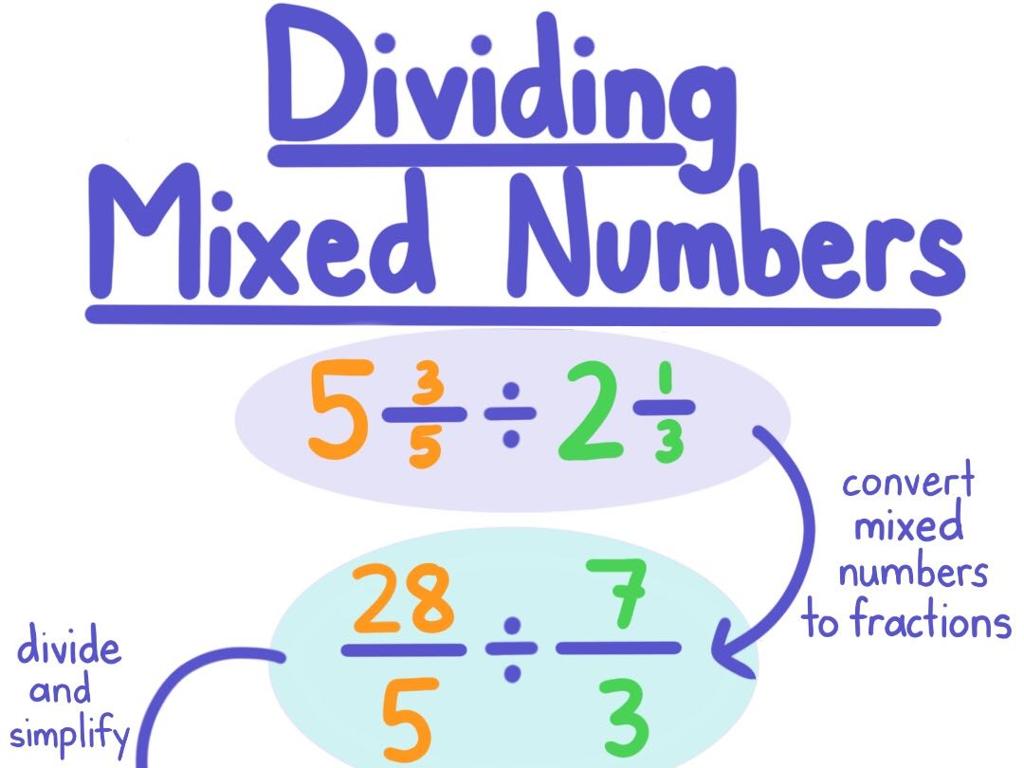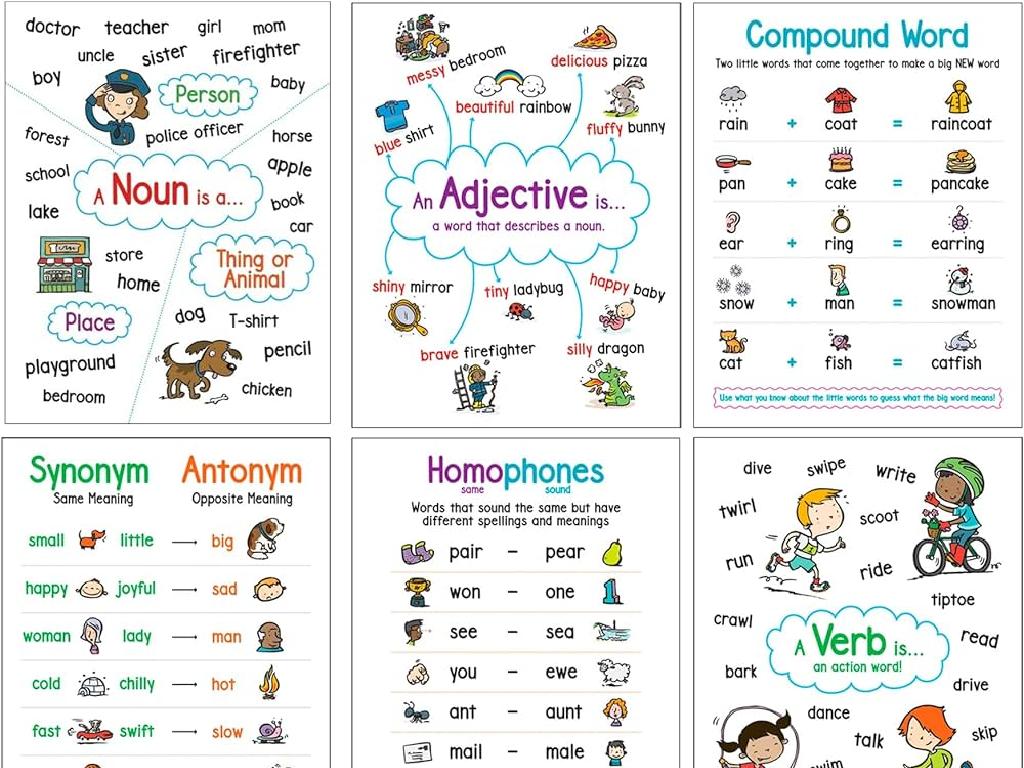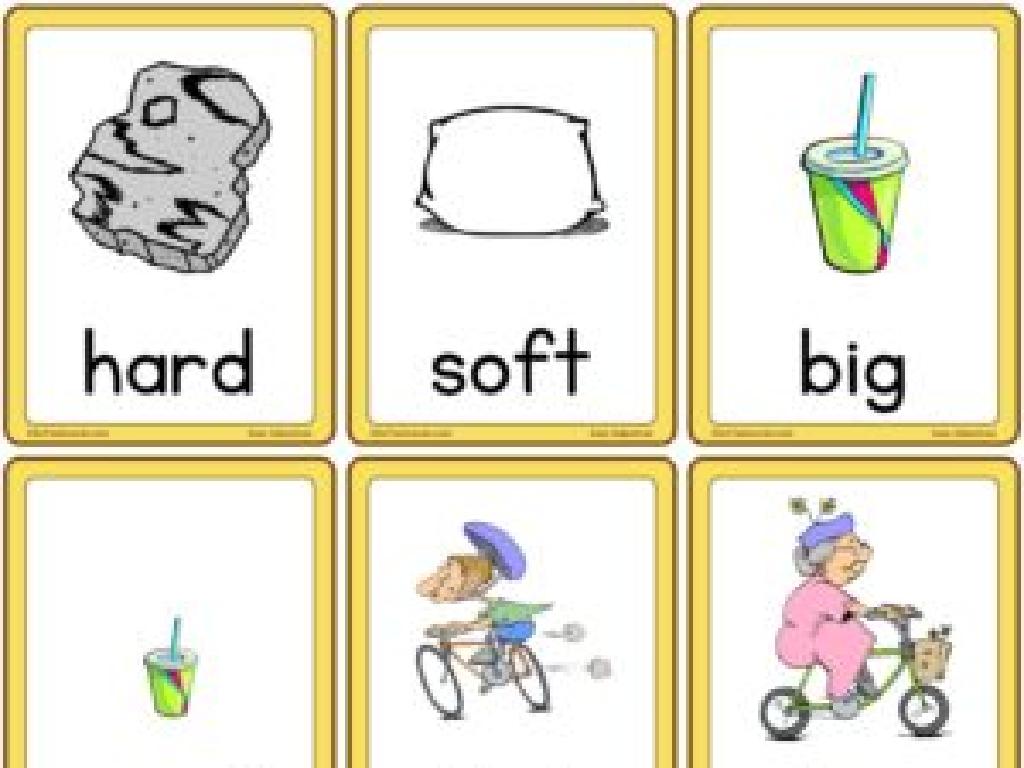Estimate Customary Measurements
Subject: Math
Grade: Sixth grade
Topic: Units Of Measurement
Please LOG IN to download the presentation. Access is available to registered users only.
View More Content
Introduction to Estimation in Measurements
– What is estimation?
– Estimation: Making an educated guess about a number.
– The usefulness of estimation
– Helps to quickly find approximate values without exact calculations.
– Estimation in daily life
– Used in cooking, shopping, and planning travel.
– Estimation vs. exact measurements
– Understanding when precise measurements are needed and when estimations suffice.
|
This slide introduces the concept of estimation, a fundamental skill in mathematics and daily life. Estimation allows students to make educated guesses about measurements, which is especially useful when exact values are not necessary or when quick decisions are needed. It’s important to highlight real-life scenarios where estimation is commonly used, such as in cooking to gauge ingredient amounts, in shopping to calculate approximate costs, or in planning travel time. Additionally, discuss the balance between the need for exact measurements in certain situations versus the convenience of estimation in others. Encourage students to think of times they have used estimation and to share their experiences.
Estimating Customary Measurements
– Overview of customary units
– Length (inches, feet, yards), weight (pounds, ounces), capacity (gallons, quarts)
– Tools for measuring
– Rulers, scales, measuring cups/spoons
– Comparing different units
– How many inches in a foot? How many pounds in a ton?
– Practice estimation skills
|
This slide introduces students to the concept of customary units of measurement, which are primarily used in the United States. Start by explaining the different units for length, weight, and capacity, and ensure students understand the relationships between them. Show common tools like rulers for length, scales for weight, and measuring cups for capacity. Engage students in comparing different units by asking questions like how many inches are in a foot or how many pounds are in a ton. Finally, encourage students to practice estimation skills by providing examples where they have to guess measurements before actually measuring.
Estimating Length: Inches and Feet
– Estimating length in inches
– Use familiar items to gauge inches, like a paperclip
– Estimating length in feet
– A foot is about the length of a ruler; visualize it
– Using objects as reference
– Compare objects to known measurements
– Classroom objects estimation activity
|
This slide introduces students to the concept of estimation in customary units of measurement, specifically inches and feet. Start by explaining that estimation is a useful skill for making quick, reasonable guesses about length without measuring tools. Demonstrate how everyday objects, such as a paperclip or a dollar bill, can serve as references for inches, and how a ruler or a notebook can represent a foot. Encourage students to use these familiar items to make their own estimations. The classroom activity involves students selecting various objects around the room and estimating their lengths in inches and feet, fostering practical application of the concept. Provide guidance on how to visually compare objects to their chosen reference items and how to best guess the measurement. This hands-on practice will help solidify their understanding of estimation.
Estimating Weight: Pounds and Ounces
– Learn to estimate weight in pounds
– Use familiar objects to gauge pounds
– Relate ounces to common items
– An ounce is as light as a pencil; 16 in a pound
– Estimate your backpack’s weight
– Guess the weight, then use a scale to check
– Discuss estimation accuracy
|
This slide introduces students to the concept of estimating weight in customary units, specifically pounds and ounces. Start by explaining that estimating is a useful skill for making quick, reasonable guesses about weight without a scale. Use relatable examples, such as common classroom items, to help students visualize and understand the weight of an ounce and a pound. For the practice activity, students will estimate the weight of their backpacks and then use a scale to see how close their estimates were. This will help them develop a sense of weight and improve their estimation skills. Encourage students to explain their estimation process and discuss why their estimates might differ from the actual weight.
Estimating Capacity: Liquid Measurements
– Estimating in cups, pints, quarts, gallons
– How many cups in a pint? Pints in a quart? We use these to estimate larger volumes.
– Use containers to visualize capacity
– Compare a milk jug (gallon) to a soda bottle (2 liters) to understand different capacities.
– Estimate water bottle capacities
– Look at a water bottle and guess how many cups or pints it might hold before measuring.
– Understanding practical applications
|
This slide aims to teach students the basics of estimating liquid capacity in customary units. Start by explaining the relationships between cups, pints, quarts, and gallons. Use everyday household containers like a milk jug for a gallon or a soda bottle to represent 2 liters, and compare them to help students visualize different capacities. For the practice activity, have students estimate the capacity of various water bottles in the classroom and then measure to check their estimates. Discuss why estimating capacity is a useful skill in real life, such as cooking or science experiments.
Tips for Accurate Estimation
– Use reference objects for estimation
– Like a pencil for inches or a door for feet
– Break down units for easier estimation
– Convert feet to inches for precision
– Practice estimating regularly
– Daily estimation improves skill
|
This slide aims to provide students with practical strategies for estimating customary measurements accurately. Encourage students to use familiar objects as reference points to make more accurate guesses about length, height, or volume. For example, knowing the approximate length of a pencil can help estimate inches, while a door’s height can serve as a reference for feet. Breaking down larger units into smaller, more manageable ones can also aid in precision. Regular practice is key to honing estimation skills; incorporate daily estimation exercises into the classroom routine. These tips will help students feel more confident in their ability to estimate and apply these skills in real-world situations.
Class Activity: Estimation Relay
– Form teams for estimation
– Estimate measurements of objects
– Use familiar objects to guess length, weight, or volume
– Record estimates on the board
– Discuss closest estimates
– Understand reasons for accuracy or inaccuracy in estimates
|
This interactive class activity is designed to engage students in practical estimation of customary measurements. Divide the class into small teams and provide a variety of common objects for them to estimate the length, weight, or volume. After the estimation, have each team record their guesses on the board. Once all teams have presented their estimates, lead a class discussion to analyze which estimates were closest to the actual measurements and explore the strategies that led to accurate estimations. Encourage students to consider factors such as reference objects, past experiences, and logical reasoning that helped them in the estimation process. This activity not only reinforces their understanding of measurement units but also enhances their estimation skills.
Estimation Wrap-up & Homework
– Recap estimation techniques
– Review rounding and benchmarking
– Estimation’s role in daily life
– Useful for budgeting, cooking, etc.
– Homework: Home measurement
– Choose various items to estimate and then measure
– Share findings next class
– Be prepared to discuss your estimates vs. actual measurements
|
This slide aims to summarize the estimation techniques learned, such as rounding to the nearest ten or hundred and using benchmark numbers. Highlight the practical applications of estimation in everyday scenarios like shopping or cooking to make it relatable. For homework, students should select a variety of items around their home to estimate and then measure, recording both their estimates and the actual measurements. Encourage creativity in the choice of items. In the next class, students will share their results, fostering a discussion on the accuracy of their estimations and understanding the importance of this skill in real-life situations.





